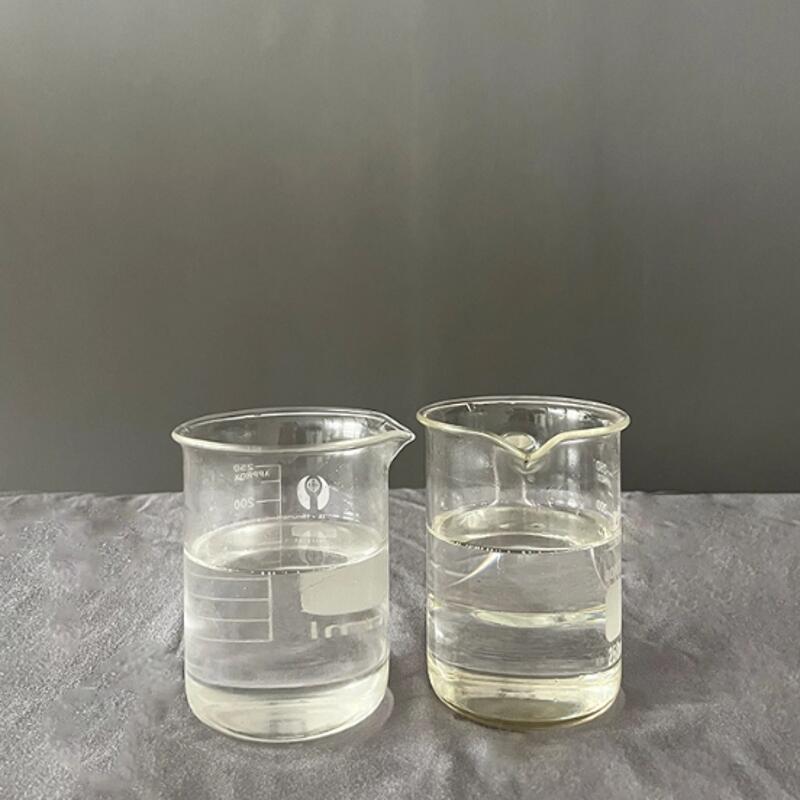-
Categories
-
Pharmaceutical Intermediates
-
Active Pharmaceutical Ingredients
-
Food Additives
- Industrial Coatings
- Agrochemicals
- Dyes and Pigments
- Surfactant
- Flavors and Fragrances
- Chemical Reagents
- Catalyst and Auxiliary
- Natural Products
- Inorganic Chemistry
-
Organic Chemistry
-
Biochemical Engineering
- Analytical Chemistry
-
Cosmetic Ingredient
- Water Treatment Chemical
-
Pharmaceutical Intermediates
Promotion
ECHEMI Mall
Wholesale
Weekly Price
Exhibition
News
-
Trade Service
Scientists from Singapore's Nanyang Technological University (NTU) and Caltech have 3D printed a flexible chainmail fabric that stiffens on demand
.
The fabric is 3D-printed from nylon plastic polymer octahedra that are interdigitated and can be turned into a rigid structure that is 25 times stiffer than its relaxed form
.
As a wearable structural fabric, this development could pave the way for next-generation fabrics that can stiffen to protect the wearer from impacts or meet additional load-bearing requirements
.
The fabric has the potential to be used in ballistic or stab-resistant vests, medical support, and protective exoskeletons for high-impact sports or workplaces such as construction sites
.
"With a lightweight and adjustable engineered fabric -- easily going from soft to stiff -- we can use it to address patient and the needs of the aging population, for example, to create exoskeletons that can help them stand, carry loads and assist them with everyday tasks
.
"
Hardening fabrics by 'plugging the transition'
Hardening fabrics by 'plugging the transition'Inspired by ancient chain armor, the scientists' hardened fabric consists of 3D-printed hollow nylon plastic polymer octahedra -- a shape with eight equal triangular faces -- that interlace
.
Based on the scientific concept of "clogging transition", when a soft fabric is wrapped inside a flexible plastic envelope and vacuum-packed, it becomes a rigid, rigid structure
.
During this transition, as the packing density increases, the particles switch from a fluid-like soft state to a solid-like hard state, however solid particles are often too heavy for wearable applications
.
To solve this problem, the researchers designed structured nylon polymer particles, each consisting of a hollow frame in the shape of rings, ellipses, squares, cubes, pyramids and other shapes composed of octahedra that can be locked into each other
.
These structures were then 3D printed as a single piece, forming a low-density chain fabric with high tensile stiffness
.
To achieve the ideal balance between the fabric's weight and flexibility, the scientists modeled the average number of contact points per particle and investigated how much each structure flexed in response to applied pressure
.
To control the stiffness of the fabric, they then encapsulated it in a flexible plastic envelope and compacted it using a vacuum
.
This pressure increases the packing density of the fabric, allowing each particle to have more contact with its neighbors, resulting in a structure that is 25 times stiffer than its "softer" form
.
"We want to make materials that can change stiffness on command," said Chiara Daraio, G.
Bradford Jones Professor of Mechanical Engineering and Applied Physics at Caltech.
"We want to create a fabric that can change from soft and foldable in a controlled way.
Rigid and able to bear weight
.
"
The 3D printed fabric was able to withstand a load of 1.
5kg, more than 50 times its own weight
.
To test the stiffness and strength of the material, the scientists threw a 30-gram steel ball onto the chain-like fabric at a speed of three meters per second
.
In the rigid case, the impact deformed the fabric by only 3 mm, a six-fold reduction in penetration depth compared to the 26 mm deformation observed when the fabric was relaxed
.
Further development with metals
Further development with metalsAfter demonstrating their concept with plastic polymer octahedra, the scientists also hope to replicate wearable structural fabrics with various metals
.
Wang Yifan said: "Inspired by ancient chain armors, we used plastic hollow particles, which were interlaced with each other to enhance the stiffness of our tunable fabric
.
To further improve the stiffness and strength of the material, we are now working on materials including aluminum in fabrics made of various metals inside, which can be used for larger scale industrial applications such as bridges or construction that require higher load capacity
.
"
To achieve this, the team has 3D printed chainmail in aluminum and successfully demonstrated that it can be stuck in a stiffer structure while maintaining the same flexibility and softness properties as nylon
.
This 3D-printed metal chain wrap has the potential to be used in applications such as body armor to protect against hard and high-velocity impacts from sharp objects
.
For these cases, the chainmail material can be made from aramid fibers, also known as Kevlar, commonly used in bulletproof vests
.
Going forward, scientists will seek to improve the properties of their chain-link fabrics and explore ways to further increase their stiffness, such as through magnetism, electricity or temperature
.
3D printing wearable fabrics
3D printing wearable fabrics3D printing has been used to create fabrics for a variety of different purposes
.
For example, MIT researchers have previously developed a flexible, 3D-printable mesh fabric that they claim is "soft as skin" and could potentially be used to make medical devices, wearable stents and implantable devices
.
Meanwhile, polymer specialists Polymaker and Covestro have jointly developed 3D printed fabrics based on TPU polymers as a more environmentally friendly alternative to traditional weaving techniques
.
The 3D printed fabric is designed to be used in conventional production lines and can be attached to other clothing items such as shoes, bags and hats
.
Because of the creative freedom 3D printing offers, it has also been leveraged elsewhere in the fashion world, even walking the catwalks at global events such as the Met Gala in New York City and Paris Fashion Week
.
Respected fashion designers Ganit Goldstein and Julia Koerner recently leveraged Stratasys' PolyJet technology to 3D print designs directly onto their garments, while Chiara Giusti teamed up with Superforma Fablab to create a collection of 3D printed garments called TECHNĒ
.
Fashion designer and researcher Mingjing Lin has also been exploring the use of 3D printing in fashion and textile design for some time, with a paper that examines the relationship between 3D printed design and the human body, and how fluidity can be achieved in 3D printed textiles
.







